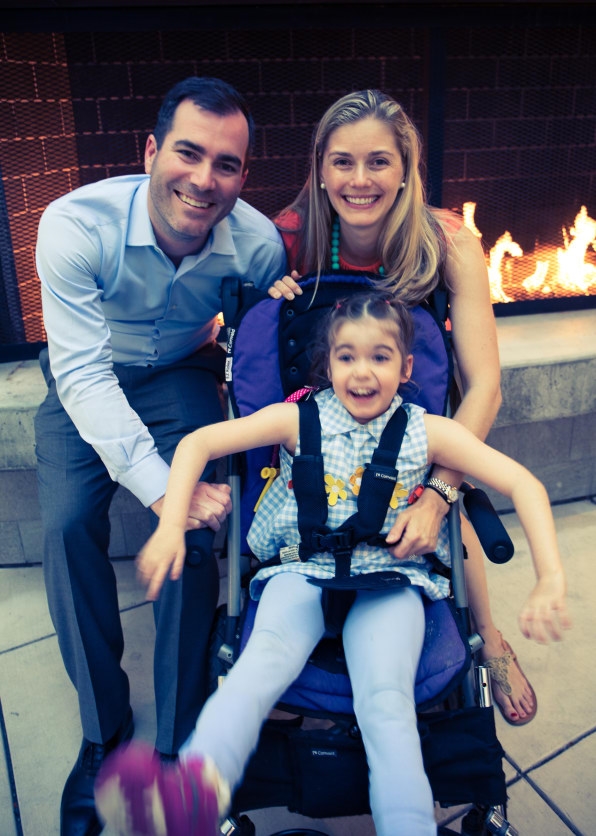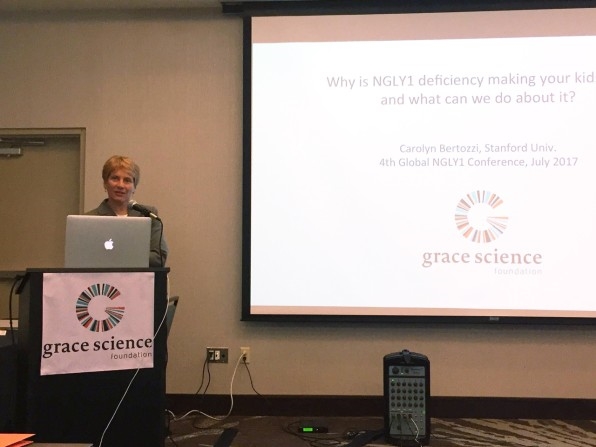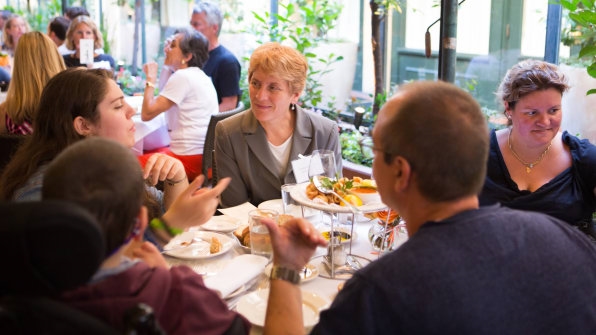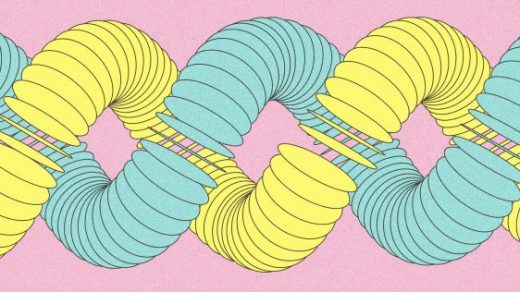This Father Founded A Medical Research Startup To Save His Kid’s Life
On October 24, 2009, Kristen Wilsey was rushed into an emergency C-section at Stanford Hospital. The surgery went smoothly but within hours, Kristen’s husband Matt sensed something was wrong with his newborn baby, Grace. “I kept calling the hospitalist over and he kept checking Grace out and said that she’s fine,” Wilsey recalls.
But over the next few days, Matt’s fears grew. Grace’s liver didn’t seem to be functioning properly and she was held in the NICU for two weeks. When she returned home, she was sluggish and looked uncomfortable. Her liver tests continued to show something was wrong.

[Photo: Angelique Wilson]
The Wilseys have some sizable advantages over most other concerned parents. Matt sold his last company to Twitter and is now a Silicon Valley angel investor. When their fears were dismissed, they could afford to get second, third, even hundredth opinions. But it wasn’t until they had Grace’s genome sequenced that they got a real answer: their daughter carries an ultra rare and dangerous genetic disorder known as NGLY1 deficiency, a genetic disorder that affects the way protein and sugar molecules interact in each of cell of the body. When people inherit two defective NGLY1 genes from their parents their bodies can’t remove excess sugar which causes a wide range of problems, from tremors to speech problems to life-threatening liver issues.
What do you when you’re told that your child has a disease that will shorten her life, that it has no known cure, and that it likely never will have one because it afflicts only about 40 other people in the world?
To Matt Wilsey, the answer seemed obvious: found a startup to find a cure.
Wilsey understood that ultra-rare diseases have a business-model problem. With only a handful of potential customers, traditional drug companies have little financial incentive to give them attention. But hadn’t Silicon Valley ventures solved important problems (like search, video hosting, and photo sharing) by focusing first on the problem itself, only finding a business model later? Could Grace’s life be saved in the short window left to her, he wondered, in the same way tech products are brought to market: through rapid prototyping, close contact with customers, and open collaboration between those creating the technology?
Compelled by this line of thinking, the Wilseys put up a small amount of money and raised about $3 million more to build the Grace Science Foundation, a nonprofit startup with the ambition to cure NGLY1 deficiency, and to do it quickly.
“When Matt got started, there was one person in the world looking at NGLY1,” says Dr. Carolyn Bertozzi, a chemistry and biology researcher at Stanford that Wilsey recruited to the team early on.
Wilsey says that, in some ways, this lack of interest in the disease was an advantage. “There are no subject matter experts and there are no biases about where good ideas have to come from,” he says.
Despite knowing little about the disease, Bertozzi says she jumped at the chance to work on the project partly because it’s so rare for a scientist to get a chance to pursue a cure for someone they know directly. “I have the stem cells made from Grace’ skin and Matt’s skin and his wife’s,” Bertozzi says. “It motivates me every day.”
Creating this kind of close contact with end users is not something traditional drug companies or government research institutions do very well. Patients tend to take center stage in the process at the end when late-stage trials are underway. Tech startups, on the other hand, live and die by constant user feedback. Grace Science isn’t alone in seeing the potential for a tech startup approach to medicine. Not long after the Wilseys began, Sean Parker and Mark Zuckerberg each founded companies to disrupt how medical research is done.
In July, following the startup model, Grace Science did something radical: they organized a gathering of researchers and as many NGLY1 families as they could find.

[Photo: Lan Haarmann]
“Sixty-five percent of the world’s NGLY1 patients came that week to Stanford and donated tissue and body fluids,” Bertozzi says. It took 18 physicians and coordinators to collect 325 skin, blood, stool, urine, and DNA samples. The researchers also used the opportunity to carefully observe their patients for clues that might lead to a cure.
“Some are talking, some are almost comatose,” Bertozzi recalls. Grace, then 7, fell somewhere in between. “Seeing this shows you what might be possible. Talking to the parents, I was able to find out their biggest problems in their daily lives. All of this makes our research better.”
Rohit Gupta, at Stanford’s School of Medicine, turned the patient samples into a first-of-its-kind open-source database that any researcher in the world can gain access to. Other researchers, working in an open and collaborative fashion, have begun mapping the patients’ gut biomes and creating stem-cell lines. Perhaps most importantly, Bertozzi has been able to get a handle, for the first time, on the biological mechanism that turns this genetic mutation into a debilitating disease. She’s found a specific target in a miscoded protein and that has opened up possibilities for treatment—whether with new drugs or existing ones already on the market.
It’s all happened in less than two years, lightning fast compared to most medical research. In fact, the discoveries have been so promising, that the Wilseys started up Grace Science, LLC, a for-profit pharmaceutical company. They recently raised a $7 million seed round from investors who see the company’s potential to help far more patients than the handful of NGLY1 patients.

[Photo: Carrie Chen]
“Because of Grace and her rare genetics, we’re looking where others aren’t,” Bertozzi says. “And that’s opening up possibilities for new discoveries that could have huge benefits.”
By understanding how NGLY1 deficiency turns off key cellular functions, Bertozzi has unexpectedly discovered a promising pathway for tamping down a cell’s tendency to resist certain drugs. The implications of this, she says, are enormous. For example, inducing a light version NGLY1 deficiency in healthy adults might make their cells far more receptive to cancer treatments. That could benefit millions of patients. Just as Wilsey had predicted, an unforeseen business model is emerging for saving his daughter’s life.
Fresh off his successful fundraising, Wilsey told me his story with tremendous enthusiasm but also with a bit of hesitation, as if his quest is too personal or selfish. “I know there are people out there that see a disease with less than 40 patients worldwide and will say we are wasting our time and investors’ money.”
I get his hesitation. But for me this isn’t really a story about Grace. It’s a story about the logic of the market vs. the logic of love. Drug companies base their innovation on a purely financial assessment of risk vs. reward. And academic and government researchers must attune their work to the grants available to them, and work slowly through bureaucracies designed to reduce risk. The market defines what they do. The logic of love is different. It says, “here’s a problem that I’m moved to solve for this person or this community.”
It’s an entirely different way of thinking. It’s more desperate, passionate and direct and thus it has the potential to open up entirely new realms of insight. By contrast, the logic of the market creates a high volume of predictable breakthroughs. The logic of love, which allows us to take risks, has the potential to create entirely unpredictable ones. We require both not just in medicine but also in social change, education, and philanthropy–wherever innovation is needed. We need more people to attempt the near-impossible without knowing exactly how they’ll be rewarded, more entrepreneurs willing to put everything they have into an idea because they aren’t just interested in a problem; instead they live it. And we need more people willing to fund them. This doesn’t imply that the logic of love should become the dominant force in innovation. But I believe it has an important, and underappreciated place in the conversation.
Grace Science may not succeed fast enough to save Grace’s life. Ultimately, it may not bring anything new to market. But it has already demonstrated a new startup model for medical research that other rare disease researchers are looking to copy. It has changed how veteran scientists like Bertozzi think about speed, collaboration, and exploration. And it’s brought patients into a far more empowered role.
“I’m not a scientist, I’m not an MD. Grace can’t speak, but I speak on her behalf,” Wilsey says. “Not only are we at the table, we’re at the head of the table.”
Jonah Sachs is a cofounder and partner at Free Range, a purpose-driven design and innovation firm. He is the author of Winning the Story Wars and the upcoming book Unsafe Thinking, which will be published in spring 2018.
Fast Company , Read Full Story
(18)







